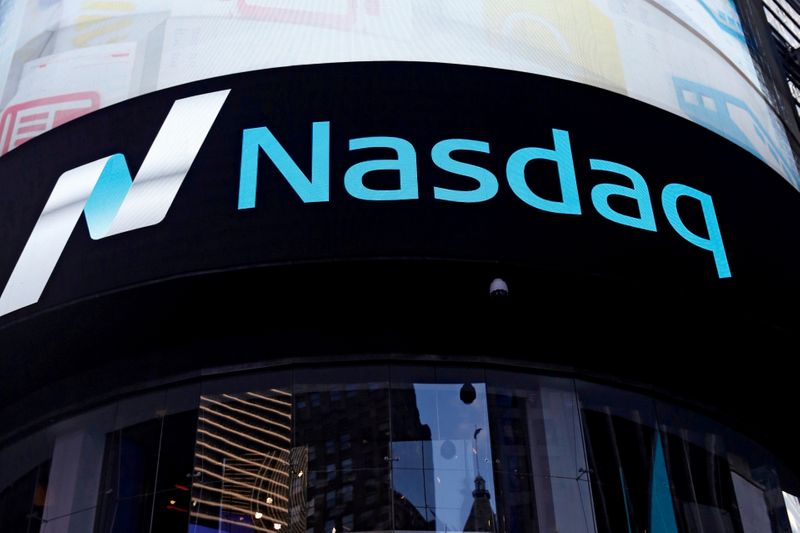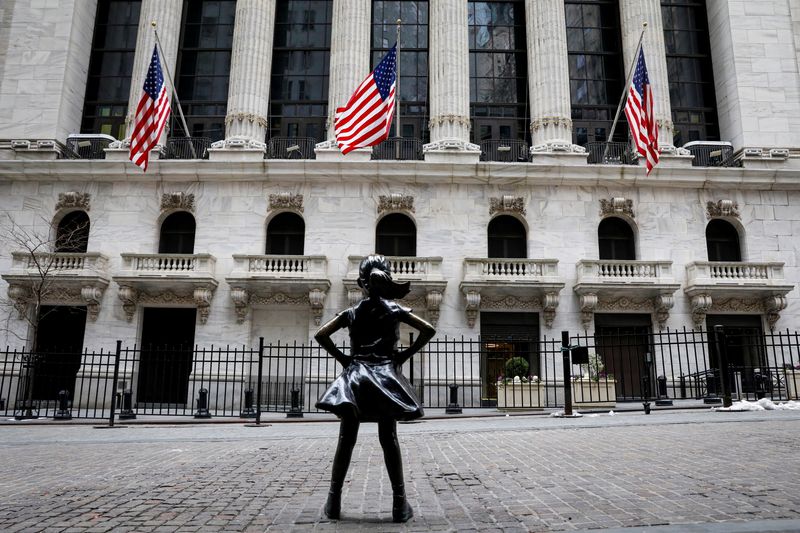By Shashank Nayar and Medha Singh
(Reuters) - The S&P 500 and the Nasdaq fell on Wednesday as investors sold off high-flying technology shares and pivoted to sectors more likely to benefit from an economic recovery on the back of more fiscal stimulus and vaccination programs.
Microsoft Corp (NASDAQ:MSFT), Apple Inc (NASDAQ:AAPL) and Amazon.com Inc (NASDAQ:AMZN) dropped between 0.9% and 1.6%, weighing the most on the S&P 500.
Energy, financial and industrial stocks gained between 0.7% and 2.5%. The remaining eight S&P sectors declined.
The Russell 1000 value index, which leans heavily on economy-linked sectors, rose 0.5%, while its growth index, comprising large tech companies, fell 1.3%.
Wall Street indexes started the day lower after data showed U.S. private employers hired fewer workers than expected in February, suggesting the labor market was struggling to regain speed despite the nation's improving public health picture.
Another report showed U.S. services industry activity unexpectedly slowed in February amid winter storms, while a measure of prices paid by companies for inputs surged to the highest level in nearly 12-1/2 years.
"We are in a bit of a tug of war situation right now with investors looking to digest the significant uptrend we have seen over the past few months while also mulling over inflation risks as bond yields continue to rise," said Michael Stritch, chief investment officer at BMO Wealth Management.
The U.S. 10-year Treasury yield ticked up to 1.48%, pressuring areas of the market with high valuations. It was still off last week's peak of above 1.61% that roiled stock markets as investors bet on rising inflation.
"There is a definite headwind for equity markets if yields go above the 1.5% level with most investors keeping an eye on the pace of yield growth," said Stritch.
Earlier, S&P futures had risen as much as 0.8% as President Joe Biden said that the United States will have enough COVID-19 vaccine for every American adult by the end of May.
The U.S. Senate is expected to take up Biden's $1.9 trillion coronavirus relief package on Wednesday, with Democrats aiming to get it signed into law before March 14, when some current jobless benefits expire.
At 12:07 p.m. ET, the Dow Jones Industrial Average was up 87.40 points, or 0.28%, at 31,478.92, the S&P 500 was down 12.15 points, or 0.31%, at 3,858.14, and the Nasdaq Composite was down 147.41 points, or 1.10%, at 13,211.38.
Exxon Mobil Corp (NYSE:XOM) rose 1.5% after the oil major unveiled plans to grow dividends and curb spending with projections that were less bold than previous years. [nL3N2L1375]
Shares in mortgage lender UWM Holdings Corp jumped about 7% as the new targets of a short-squeeze gain popularity on internet message boards.
Later in the day, investors will turn to the Federal Reserve's Beige Book report, which will give a glimpse of the state of the economy based on conversations with business contacts.
Advancing issues outnumbered decliners by a 1.01-to-1 ratio on the NYSE. Declining issues outnumbered advancers for a 1.22-to-1 ratio on the Nasdaq.

The S&P index recorded 46 new 52-week highs and no new lows, while the Nasdaq recorded 224 new highs and 40 new lows.
